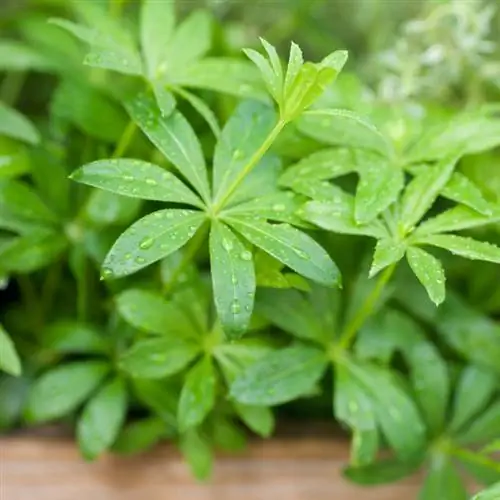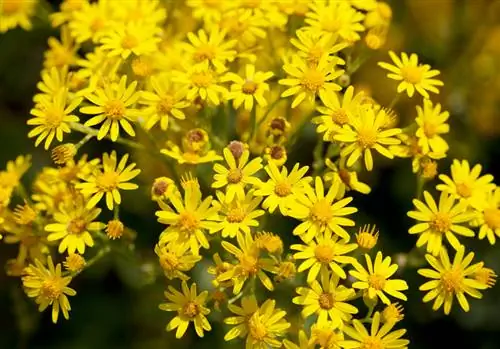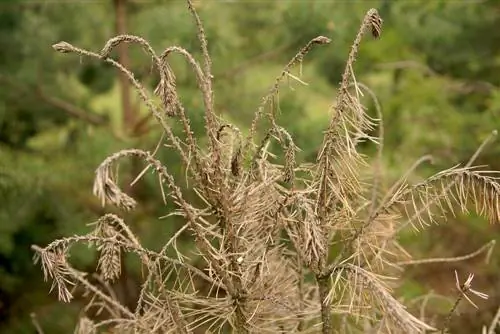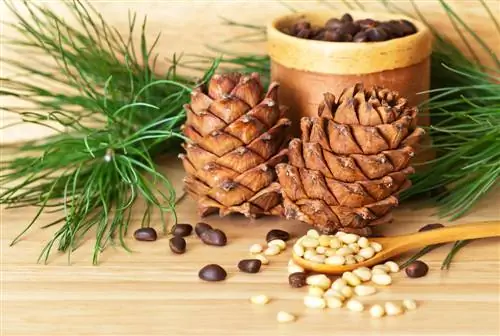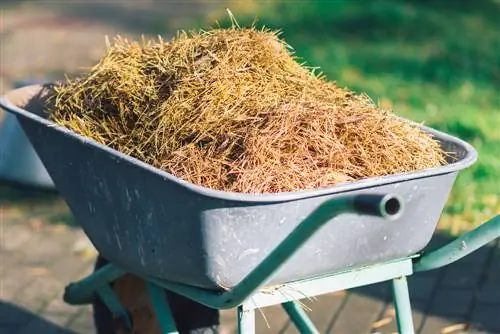- Author admin [email protected].
- Public 2024-01-02 03:03.
- Last modified 2025-01-23 11:21.
You can tell the difference between a deciduous tree and a coniferous tree at first glance by the needles. But could you spontaneously describe the needles of a pine tree? If you take just a few minutes to read the following article, you'll soon be an expert at identifying pine trees by their needles.
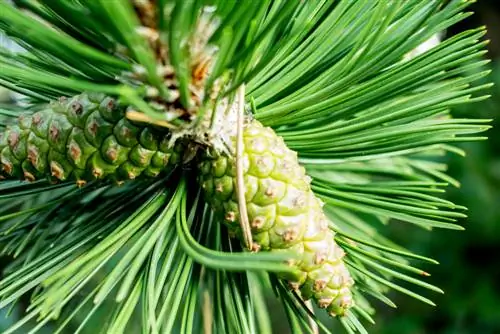
What do pine needles look like and what are they good for?
Pine needles are long, narrow and often gathered in clumps. They vary in length (2.5 to 50 cm), color and number per base, depending on the species. They remain on the tree for up to 30 years and can be used for medicinal purposes such as anti-inflammatory and pain relief.
Appearance and shape
Pine needles reach a length of 2.5 to 50 cm. In contrast to other conifers, they have a comparatively long shape, but are relatively narrow at 0.5 to 2.5 cm. If you look closely, you will see the fine sawing on the edge of the leaf. However, these details are still relatively vague and do not serve to reliably identify the conifer. To give you an even more precise definition, different species are listed here along with their appearance:
- Banks pine: whorled, two-needle, up to 4 cm long, rounded tip, green to yellowish
- Bendable jaws: up to 8 cm long, slightly edged, blue-green
- Yellow pine: very soft needles, 2-5 pieces with a length of up to 20 cm at one base
- Awn pine: dark green to blue-green needles, five at a base, 4 cm long, often covered with a resin film
- Jeffrey's jaws: three pieces at one base, triangular and twisted, up to 20 cm long, blue-green
- Jersey pine: two pieces on one base, twisted, 8 cm long, striking shine
Leaf shedding
The needle base mentioned above forms the link between the branch and the needles. A needle sheath surrounds the base for protection. Pine needles sometimes remain on the tree for a full 30 years. They fall either individually or together with the base.
Importance for medicine
You probably know the incomparable scent of pine needles. After a rainy day in the forest, many people find it relaxing. Medicine also uses the essential oils responsible for this. Healing infusions in saunas or baths provide relief
- Inflammation
- Bronchitis
- Rheumatism
- and muscle pain
Our ancestors already used pine needles as a blood purifier.
What to do if discoloration occurs?
If the needles of your pine tree turn brown or fall off more frequently, you should monitor developments. Although the pine is an evergreen conifer, leaves change every two to ten years. If your jaw does not recover from this condition, you may have
- a care mistake
- a pest
- or the widespread jaw dieback before


